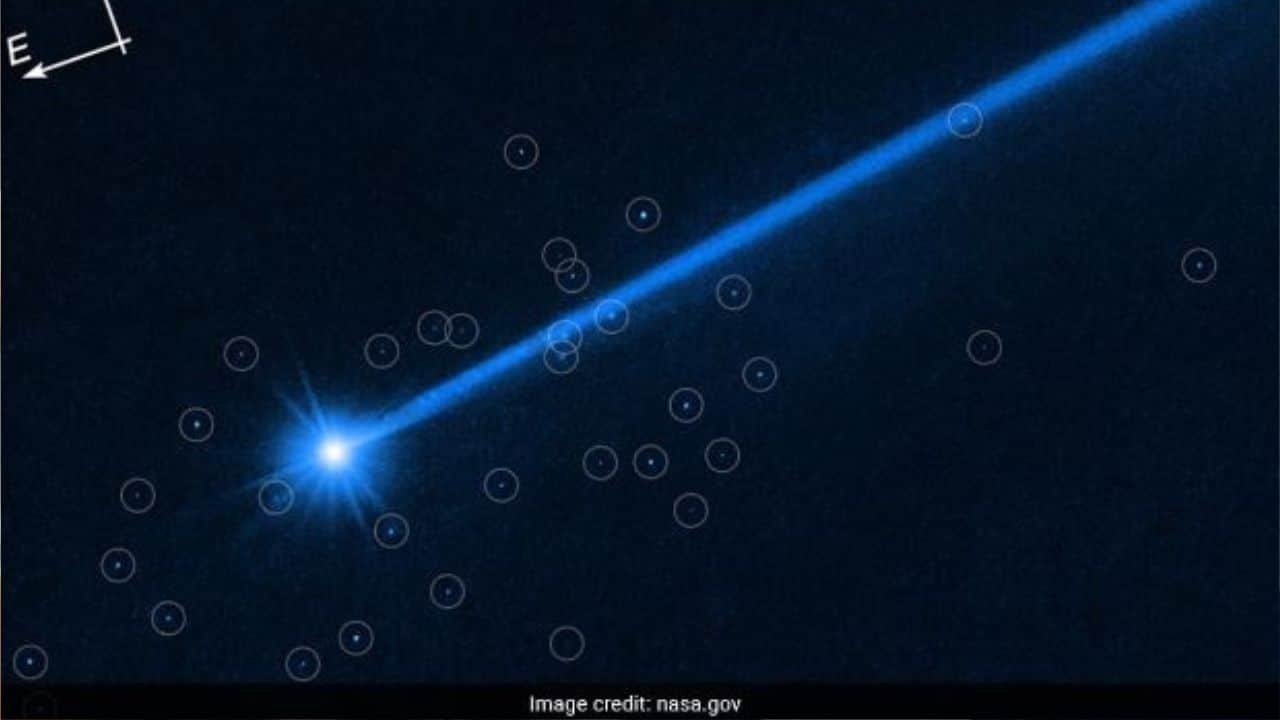In a groundbreaking test of Earth’s planetary defenses, NASA’s DART probe successfully knocked an asteroid off its trajectory, creating a dazzling display of boulders hurtling into space.
The story was shared by Dawn with images of the historic experiment. Last year’s momentous collision between the fridge-sized spacecraft and the pyramid-sized, rugby ball-shaped asteroid Dimorphos, situated 11 million kilometers from Earth, yielded astonishing results, as captured by the Hubble Space Telescope. The images were released on Thursday.
Astonishing Aftermath Unveiled:
Newly released images from the Hubble Space Telescope unveiled the extraordinary aftermath of the DART mission. A total of 37 boulders, ranging in size from one to seven meters in diameter, were sent floating into the cosmos. These boulders represent approximately two percent of the loosely-held-together asteroid’s surface, as estimated in a recent study by scientists.
Unraveling the Secrets:
Scientists are eager to continue tracking the trajectory of these celestial boulders, as their movement patterns hold crucial clues about how they were propelled from the asteroid’s surface. The research, detailed in the Astrophysical Journal Letters, offers invaluable insights into asteroid deflection techniques and potential strategies for planetary defense.
Insights for Future Asteroid Defense:
The findings hold significant implications for future missions aimed at diverting potentially life-threatening asteroids on a collision course with Earth. While the images might raise concerns about boulder dispersion towards Earth, experts reassure that these specific rocks pose no threat. The successful DART mission sets an encouraging precedent for safeguarding our planet against potential asteroid threats and lays the groundwork for future endeavors to protect Earth from space hazards.







